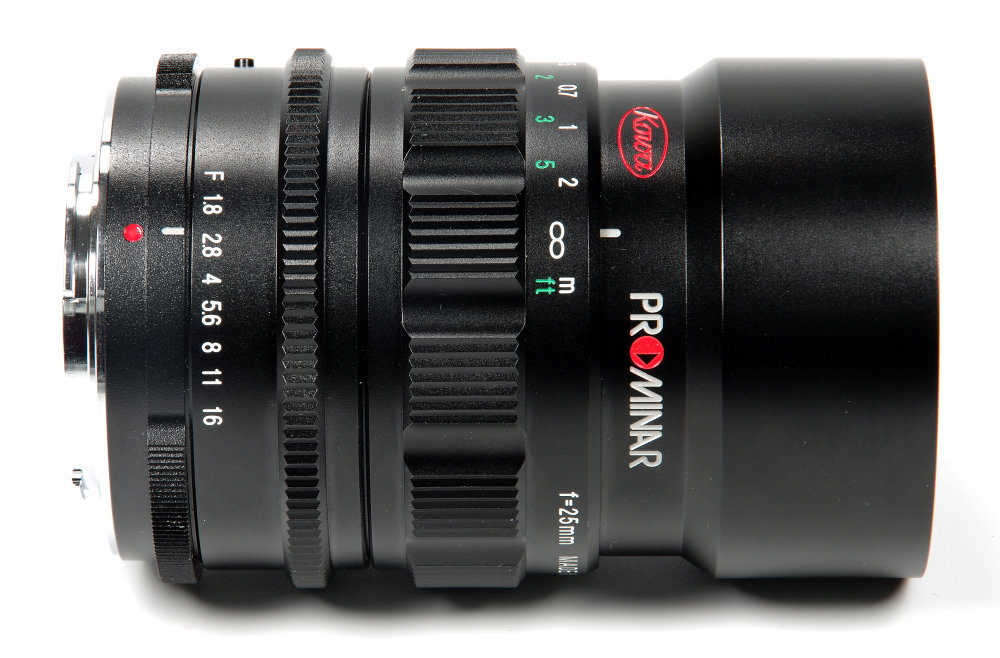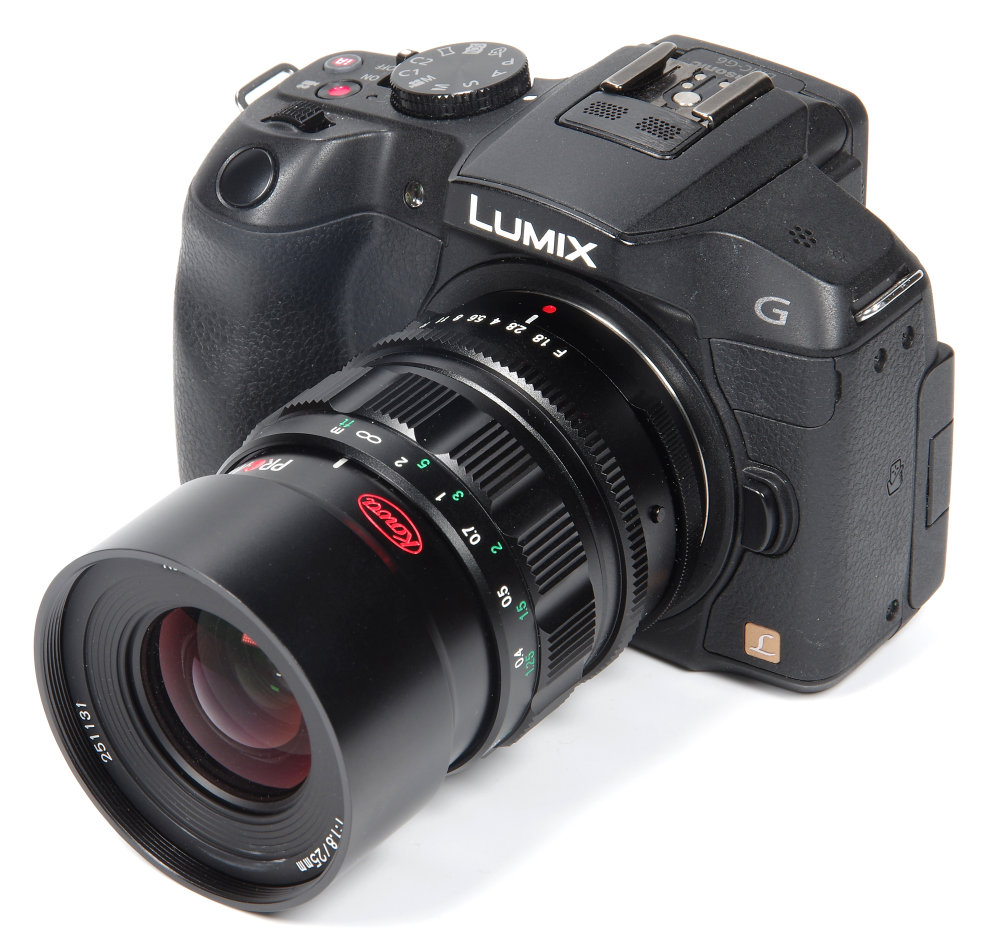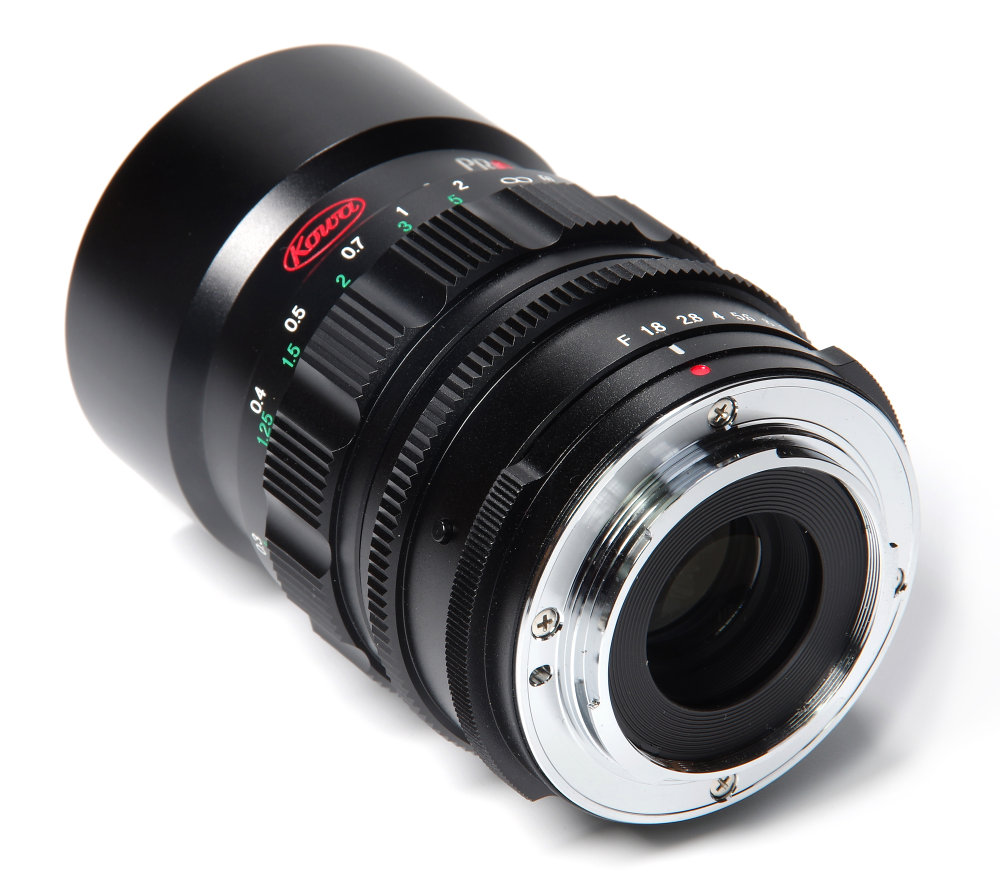Kowa Prominar 25mm f/1.8 Review
Kowa Prominar 25mm f/1.8 Handling and Features
The lens itself is quite compact in diameter, but fairly long. It weighs in at a solid 400g, which helps to convey a reassuring sense of quality. The finish is, as with its two siblings, impeccable. There is a 55mm filter thread and unfortunately this is needed for the screw-in lens hood provided. This is somewhat fiddly in practice, even though the thread is clearly of high quality. A bayonet fit would have been much more efficient.
The focusing ring has very sculpted and hard ribbing to ensure a good grip, helping to maintain the vintage look of the lens as a whole. The lens is manual focus only, down to 0.25m, just under 10 inches. This represents a maximum magnification of 0.15x, or 1:6.5. This is actually usefully closer than the average expectation for a lens of this type, which would be a magnification of 1:10. Manual focusing is very easy, particularly when using the various focusing aids available on the camera. For best results using the magnified image ensures accurate focus. There is narrow enough depth of field at 25mm and f/1.8 to ensure that the focus position is obvious. Without taking the camera from the eye, focusing can be achieved at f/1.8 and then the click stops counted down to set the desired working aperture. This seems to work quickly and effectively as the aperture set is fixed until altered. There is no electronic connection with the camera, so no automatic stopping down.
There is no depth of field scale, although there are ample distances marked in feet and metres to make this a useful possibility. 25mm on MFT format has a “35mm-format equivalent” of 50mm, and this is of course the traditional “standard” lens that many film photographers will have started off with. As such, designing it for high quality and a high level of correction is more or less a given. This focal length is looked on as a standard lens because it gives a view of the world similar to that of the human eye. It is suitable for a very wide range of subject matter and usually lenses of this type will take a fair amount of optical abuse from attachments, close up devices and so on, with quality holding well. The focusing and aperture rings move in the direction of Canon cameras, rather than Nikon/Pentax which move in the opposite way.
Finally we have the aperture ring, with a design that is very intelligent indeed. The review setting used was f/stops, which are provided with firm, positive click stops at full stop intervals, although one third stops are quite easy to approximate. Pressing a small button enables the whole ring to be rotated through 180 degrees to bring into play the T stop settings. The T stops, usually used for movie shooting, are clickless. The whole idea is highly inventive and works beautifully. There are 9 diaphragm blades, forming a nicely rounded aperture.
Lens construction is 8 elements in 6 groups, including 1 aspherical and 1 XD (Extra Low Dispersion). This is fairly complex for the specification and bodes well for its performance.
Of course, there are a good many 25mm fast lenses available for MFT cameras, so let's see how that performance stacks up and if it could tempt the buyer into seriously looking at this option.
Add your message
Please login here or if you've not registered, you can register here. Registering is safe, quick and free.
photodo Stats
428 MTF tests
74 in-depth photodo reviews
100+ users join each day
Help the lens community by reviewing or rating a lens today via our lens search
Latest Lens Reviews
- Chinon 28mm f/2.8 Vintage Lens Review
- Canon EF 70-200mm f/4L IS II USM Lens Review
- Samyang AF 85mm f/1.4 EF Review
- Sigma 70mm f/2.8 DG Macro Art Review
- Samyang AF 24mm f/2.8 FE Review
- Meike 50mm f/1.7 Review
- Tamron 70-210mm f/4 Di VC USD Review
- Lensbaby Burnside 35mm f/2.8 Review
- Asahi Super Takumar 50mm f/1.4 Review
- Asahi Super-Multi-Coated Takumar 135mm f/3.5 Review



